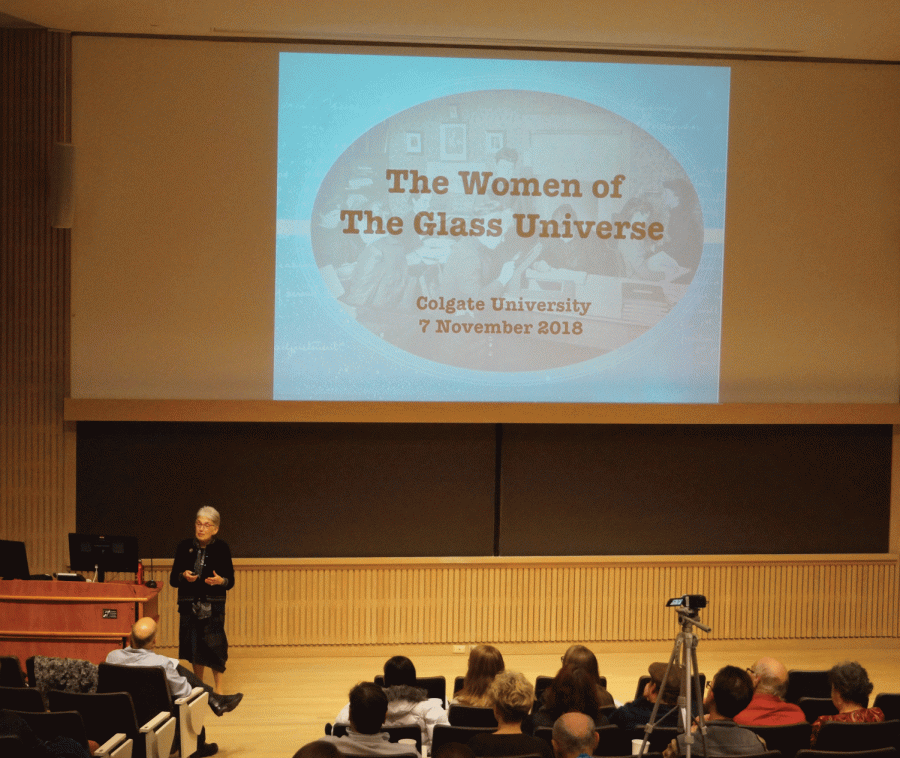Dava Sobel & Women of the Glass Universe
Science writer Dava Sobel spoke to students about her novels, which tackle women’s contributions to history.
The Department of Physics & Astronomy and STEM club Impulse hosted author Dava Sobel for a special lecture titled “The Women of the Glass Universe” on November 7. Sobel’s book, “The Glass Universe: How the Ladies of the Harvard Observatory Took the Measure of the Stars,” was published in 2016 and discusses how the first women hired as calculators for the Harvard College Observatory paved the way for our modern understanding of astrophysics.
Dava Sobel is a former science journalist, writing for prestigious journals and newspapers such as The New York Times, Harvard Magazine, Audubon, Discover, Life, Omni and The New Yorker, among others. Sobel became a number one New York Times Best- seller with her book “Galileo’s Daughter,” the story of Galileo told from his oldest child’s perspective through letters found and trans- lated by Sobel herself. In her latest book, Sobel continues her research into long-forgotten history by diving into how women came to work for the male-dominated Harvard College Observatory at an exclusively male Harvard College in the the 1870s.
The women spent years meticulously photographing glass plates by hand. Today, there are still around half a million plates stored in the Harvard University Archives and, according to Sobel, there is an ongoing project attempting to digitize the glass plates. Natural disaster has threatened the archives in the past, and the incredible resolution of the photographs taken by these women means that most of the data captured has not yet been analyzed, due to the sheer number of potential targets on each.
Sobel went into great detail about each of the women who came to work for the observatory and the incredible advancements they made to the project’s vision and astronomy as a field. She mentioned Henrietta Swan Leavitt, Annie Jump Cannon and Antonia Maury, all of whom were qualified in their own right before coming to the observatory.
“There really are a lot of role models,” Sobel said. “Several of these women were even considered by bright minds at the time as worthy of worldwide recognition such as the Nobel Prize.”
Sobel said she finds it incredible how much these women have achieved given how little is known about them today.
“The discoveries they made are still in use,” Sobel said.
Edwin Hubble, most notable for his recognition of galaxies outside of the Milky Way and the use of his name for the Hubble Space Telescope, made his most famous discovery using data collected and analyzed by Henrietta Swan Leavitt. Leavitt was interested in the relationship between the luminosity of distant objects and how it changes over time, which would eventually be recognized as Leavitt’s law.
Sobel’s passionate lecture only scratched the surface of what these women have done, and Sobel admitted she has learned quite a few things from them.
“Telling this story got me in touch with my own misogyny. I had no idea how much I had internalized,” Sobel said. “I was constantly surprised by what had been achieved.”
After the conclusion of her lecture, Sobel ended with a call to action for the progress of science and society.
“Go have your own stories of science to tell me,” Sobel said.
Contact Kuba Alicki at [email protected].







